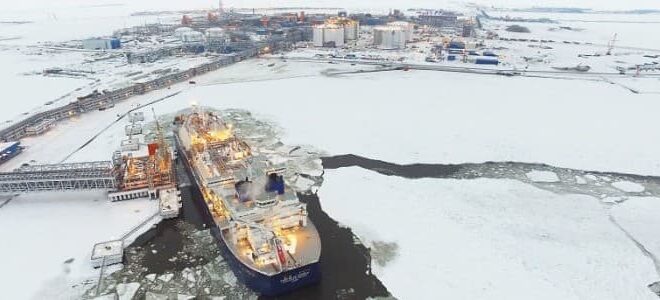Russia may have to put its plans to significantly boost its eastbound pipeline gas exports and its LNG exports to the global markets on ice amid growing challenges.
Russia has relied on the Chinese market for higher pipeline gas exports since Putin’s invasion of Ukraine and the slashed volumes of gas supplies to Europe. But talks on a second pipeline to China appear to have stalled, while the Western sanctions on Moscow were intensified to include a flagship new LNG export project in the Arctic that was supposed to come online this year.
Currently, Gazprom supplies natural gas to China via the Power of Siberia pipeline. Deliveries in 2022 stood at 15 billion cubic meters, while total flows for this year were expected to rise to 22 billion cubic meters.
Supplies to China in 2023 are now expected at 23.2 billion cubic meters, exceeding earlier plans, Alexey Miller, chief executive of Russia’s gas giant Gazprom told Putin this week.
Deliveries in 2025 are expected to jump to around 38 billion cubic meters, Miller told Putin during a meeting on Thursday.
Despite boasting increased deliveries to China, Russian gas exports have been shrinking since the war in Ukraine began, and it would take years for Russia to offset the previously exported pipeline volumes to Europe with higher supplies to other markets.
The Power of Siberia was one of the biggest projects recently completed by Gazprom and the first conduit for Russian gas to China. Now, there’s talk about the Power of Siberia 2, but negotiations between Russia and China haven’t progressed much. An agreement on the Power of Siberia 2 has not been reached yet due to some sticking points, including the prices at which Gazprom will deliver the gas.
The Power of Siberia 2 pipeline was designed to ship gas from Russia’s Western Siberia Altai region to northeast China via Mongolia.
Before the war in Ukraine, Russia supplied around one-third of all the gas to Europe.
China has become a first-priority destination for the Russian state gas major Gazprom after the breakup with Europe.
Earlier this year, Gazprom’s Miller said that Russia could soon supply China with volumes of gas comparable with the volumes Moscow sent to Western Europe before the invasion of Ukraine.
Analysts doubt that Russia could boost volumes to China to such levels for at least another seven years.
With the lack of new pipelines to the east, Russia has been betting on increased LNG sales, which Europe imports in large quantities.
The EU has been the single biggest buyer of Russian LNG since the Western sanctions on Russian oil came into effect at the end of last year, per data from the Centre for Research on Energy and Clean Air (CREA).
Gas imports from Russia, unlike oil and oil products, are not banned by the EU. At least not yet. Still, the EU has a target to ditch Russian gas by 2027.
But the most recent U.S. sanctions on Russia’s latest LNG project, Arctic LNG 2, jeopardize the Russian strategy to become a major player on the global LNG market.
Potential contract cancellations for the construction of ice-class LNG carriers and U.S. sanctions on the latest Russian LNG export project could hamper Russia’s plans to boost LNG sales now that its pipeline route to Europe is largely cut off.
“US sanctions on Arctic LNG 2 have become a bogeyman for Russia’s whole LNG strategy,” Sergei Kapitonov, an analyst at Moscow-based Skoltech Project Center for Energy Transition and ESG, told Energy Intelligence.
According to Alexey Belogoryev, Research and Development Director of the Moscow-based Institute for Energy and Finance, the U.S. sanctions on Arctic LNG 2 have created great uncertainties going forward.
Novatek, the Russsan LNG exporter developing the project, “will be forced to switch to the Russian fleet and to those tankers that, although they fly a false flag, have Russian beneficiaries through a chain of companies,” Belogoryev says.
“The problem of providing the fleet is now a key problem. The problem will especially worsen if an embargo is imposed on Russian LNG in Europe. And this is quite possible after 2026,” he added.

 Iran Energy News Oil, Gas, Petrochemical and Energy Field Specialized Channel
Iran Energy News Oil, Gas, Petrochemical and Energy Field Specialized Channel



